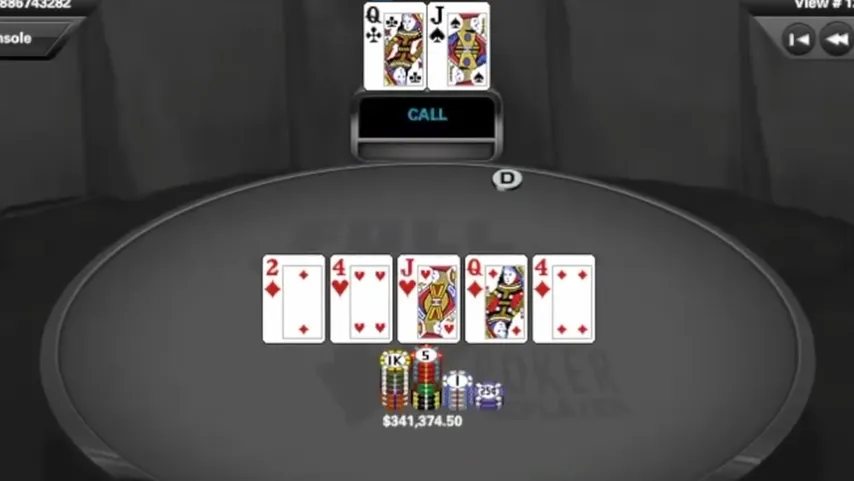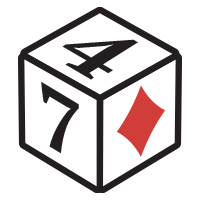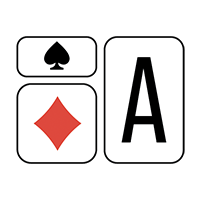We’re going back in time to a period when online poker was thriving in the aftermath of its boom, when Full Tilt Poker was still a player in the game—(I'm not crying, you’re crying)—and when an unknown player named Isildur1 (Viktor Blom) burst onto the scene to challenge the best players in the world at the highest stakes, often simultaneously.
Probably the most epic of these battles was against Tom Dwan, who at that time was known as perhaps the most aggressive player and the king of No-Limit Hold'em.
Isildur surely knew how to rise to that challenge.
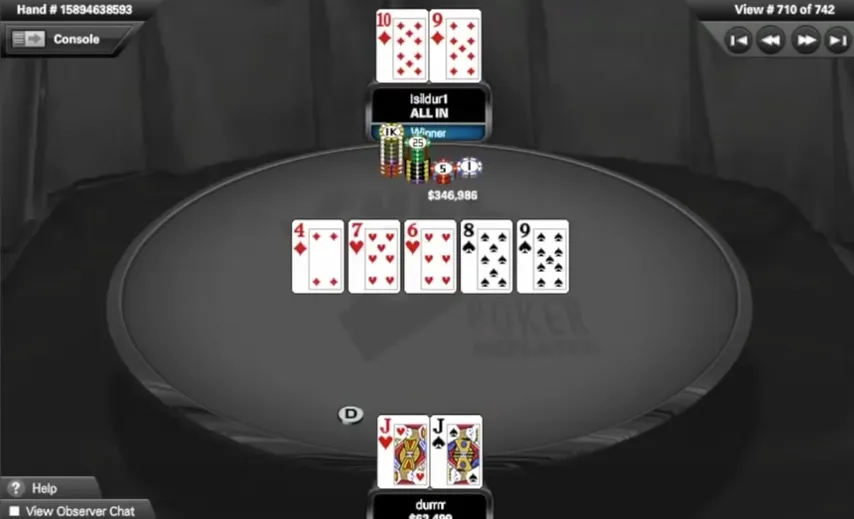
Yes, it was wild, but how do these players actually compare to the level of play we see today? Years before the first poker solver became public, players had to learn to figure things out for themselves without the ability to consult a resource for optimal solutions. In hindsight, how close did they actually get to GTO?
In this hand, 200 big blinds deep, Isildur three-bets with , and Tom Dwan calls with . Both players are employing standard plays for heads-up scenarios. The flop comes down 9-high, and Isildur decides to go for a bet of around 60% pot, which is certainly not a bad sizing. However, a solver would prefer a larger sizing in this dynamic situation. It’s generally more profitable to put in significant money early with a strong but somewhat vulnerable hand like Queens, especially since they lack a club.
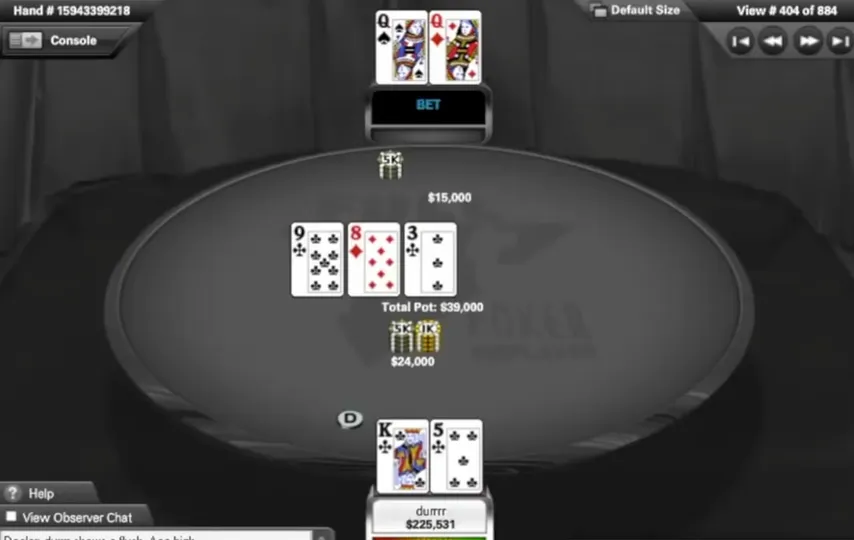
On the turn, a card that isn't particularly beneficial for Queens falls ( ), prompting Isildur to check, which should practically represent his entire range.
Dwan, of course, wants to bet, and he nails the sizing with a two-thirds pot bet—this is the solver's preferred sizing, even when presented with several options.
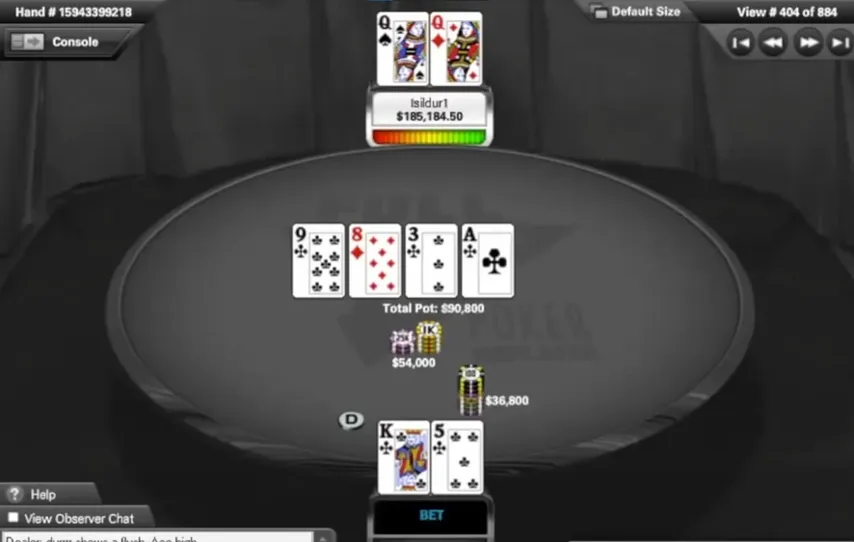
Isildur, however, might be inclined to fold his Queens without a club, even though they’ve performed well thus far. They don't stack up well against Dwan’s betting range on this turn, which consists of numerous hands that either have him drawing dead or just drawing to two outs. Even Dwan’s bluffs hold great equity. Despite this, Isildur decides to call.
What happens next is quite interesting.
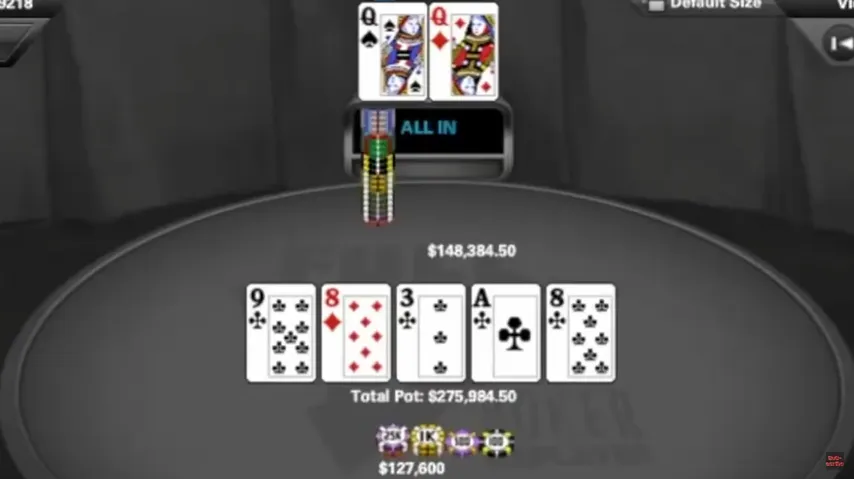
It looks crazy, but that’s part of the game—just not for this hand or the sizing. Queens without a club can sometimes opt for a donk bet, but only at a small sizing. A block bet serves as a bluff, as no worse hand would call, while some better hands would fold according to the simulation. Additionally, it prevents worse hands from bluffing him.
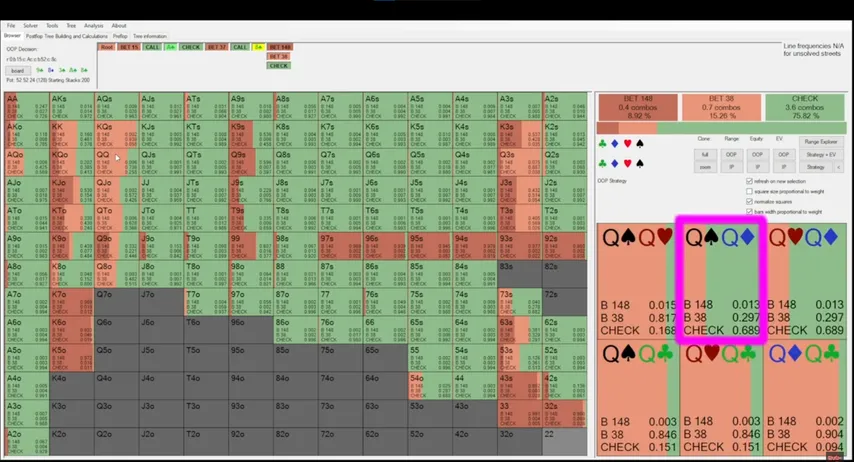
The notion of a block bet didn't really exist back then; almost nobody employed this strategy. Isildur did notice, however, that this specific river card brought significant changes to the board. Many hands that Dwan could likely have played this way—such as Aces, nines, 9-8, or even Kings with the club—improved significantly. Given that Dwan's range consists of many medium flushes, he might choose to check behind on this fourth club.
With the board pairing, Isildur has an incentive to donk bet his weaker hands. He probably figured that Queens are among the few hands he would have check-called the turn with that are now worth almost nothing.
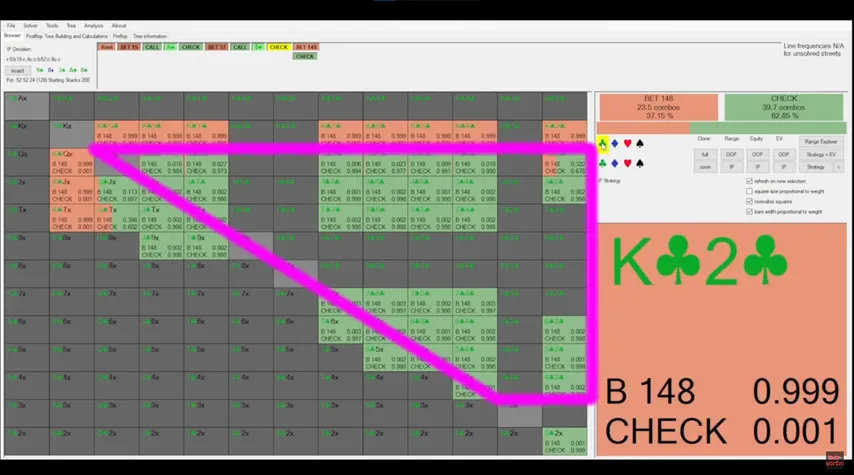
So, why not turn those Queens into a block bet and represent one of these nutty hands? The thought process behind this play is quite profound; it's just the hand selection that could have been optimized significantly.
In general, the solver would prefer pairs for the bluff to at least block in-position's full houses, but that’s a hard thing to gauge when solvers didn't yet exist.
- GipsyTeam's unique promotions
- Help with deposits and cashouts
- Access to private freerolls
- Round-the-clock support
- GipsyTeam's unique promotions
- Help with deposits and cashouts
- Access to private freerolls
- Round-the-clock support
- GipsyTeam's unique promotions
- Help with deposits and cashouts
- Access to private freerolls
- Round-the-clock support
- Уникальные акции от GipsyTeam
- Помощь с депозитами и кешаутами
- Доступ в закрытые фрироллы
- Круглосуточная поддержка
- Уникальные акции от GipsyTeam
- Помощь с депозитами и кешаутами
- Доступ в закрытые фрироллы
- Круглосуточная поддержка
- GipsyTeam's unique promotions
- Help with deposits and cashouts
- Access to private freerolls
- Round-the-clock support
- Уникальные акции от GipsyTeam
- Помощь с депозитами и кешаутами
- Доступ в закрытые фрироллы
- Круглосуточная поддержка
- GipsyTeam's unique promotions
- Help with deposits and cashouts
- Access to private freerolls
- Round-the-clock support
- GipsyTeam's unique promotions
- Help with deposits and cashouts
- Access to private freerolls
- Round-the-clock support
- GipsyTeam's unique promotions
- Help with deposits and cashouts
- Access to private freerolls
- Round-the-clock support
- GipsyTeam's unique promotions
- Help with deposits and cashouts
- Access to private freerolls
- Round-the-clock support
- GipsyTeam's unique promotions
- Help with deposits and cashouts
- Access to private freerolls
- Round-the-clock support
- GipsyTeam's unique promotions
- Help with deposits and cashouts
- Access to private freerolls
- Round-the-clock support
- GipsyTeam's unique promotions
- Help with deposits and cashouts
- Access to private freerolls
- Round-the-clock support
- GipsyTeam's unique promotions
- Help with deposits and cashouts
- Access to private freerolls
- Round-the-clock support
- GipsyTeam's unique promotions
- Help with deposits and cashouts
- Access to private freerolls
- Round-the-clock support
- GipsyTeam's unique promotions
- Help with deposits and cashouts
- Access to private freerolls
- Round-the-clock support
- GipsyTeam's unique promotions
- Help with deposits and cashouts
- Access to private freerolls
- Round-the-clock support
- GipsyTeam's unique promotions
- Help with deposits and cashouts
- Access to private freerolls
- Round-the-clock support
- GipsyTeam's unique promotions
- Help with deposits and cashouts
- Access to private freerolls
- Round-the-clock support
- GipsyTeam's unique promotions
- Help with deposits and cashouts
- Access to private freerolls
- Round-the-clock support
- GipsyTeam's unique promotions
- Help with deposits and cashouts
- Access to private freerolls
- Round-the-clock support
- Уникальные акции от GipsyTeam
- Помощь с депозитами и кешаутами
- Доступ в закрытые фрироллы
- Круглосуточная поддержка
- GipsyTeam's unique promotions
- Help with deposits and cashouts
- Access to private freerolls
- Round-the-clock support
- GipsyTeam's unique promotions
- Help with deposits and cashouts
- Access to private freerolls
- Round-the-clock support
- GipsyTeam's unique promotions
- Help with deposits and cashouts
- Access to private freerolls
- Round-the-clock support
- GipsyTeam's unique promotions
- Help with deposits and cashouts
- Access to private freerolls
- Round-the-clock support
- GipsyTeam's unique promotions
- Help with deposits and cashouts
- Access to private freerolls
- Round-the-clock support
- GipsyTeam's unique promotions
- Help with deposits and cashouts
- Access to private freerolls
- Round-the-clock support
- Уникальные акции от GipsyTeam
- Помощь с депозитами и кешаутами
- Доступ в закрытые фрироллы
- Круглосуточная поддержка
- GipsyTeam's unique promotions
- Help with deposits and cashouts
- Access to private freerolls
- Round-the-clock support
- GipsyTeam's unique promotions
- Help with deposits and cashouts
- Access to private freerolls
- Round-the-clock support
- Уникальные акции от GipsyTeam
- Помощь с депозитами и кешаутами
- Доступ в закрытые фрироллы
- Круглосуточная поддержка
- GipsyTeam's unique promotions
- Help with deposits and cashouts
- Access to private freerolls
- Round-the-clock support
- Уникальные акции от GipsyTeam
- Помощь с депозитами и кешаутами
- Доступ в закрытые фрироллы
- Круглосуточная поддержка
- Уникальные акции от GipsyTeam
- Помощь с депозитами и кешаутами
- Доступ в закрытые фрироллы
- Круглосуточная поддержка
- GipsyTeam's unique promotions
- Help with deposits and cashouts
- Access to private freerolls
- Round-the-clock support
- GipsyTeam's unique promotions
- Help with deposits and cashouts
- Access to private freerolls
- Round-the-clock support
- GipsyTeam's unique promotions
- Help with deposits and cashouts
- Access to private freerolls
- Round-the-clock support
- Уникальные акции от GipsyTeam
- Помощь с депозитами и кешаутами
- Доступ в закрытые фрироллы
- Круглосуточная поддержка
- GipsyTeam's unique promotions
- Help with deposits and cashouts
- Access to private freerolls
- Round-the-clock support
- GipsyTeam's unique promotions
- Help with deposits and cashouts
- Access to private freerolls
- Round-the-clock support
- GipsyTeam's unique promotions
- Help with deposits and cashouts
- Access to private freerolls
- Round-the-clock support
- GipsyTeam's unique promotions
- Help with deposits and cashouts
- Access to private freerolls
- Round-the-clock support
- Уникальные акции от GipsyTeam
- Помощь с депозитами и кешаутами
- Доступ в закрытые фрироллы
- Круглосуточная поддержка
- GipsyTeam's unique promotions
- Help with deposits and cashouts
- Access to private freerolls
- Round-the-clock support
- GipsyTeam's unique promotions
- Help with deposits and cashouts
- Access to private freerolls
- Round-the-clock support
Now, let's switch to Tom Dwan.
In this hand, he opens with , and Isildur calls with . Both players are making fine choices, although in simulations, would mostly opt for a three-bet.
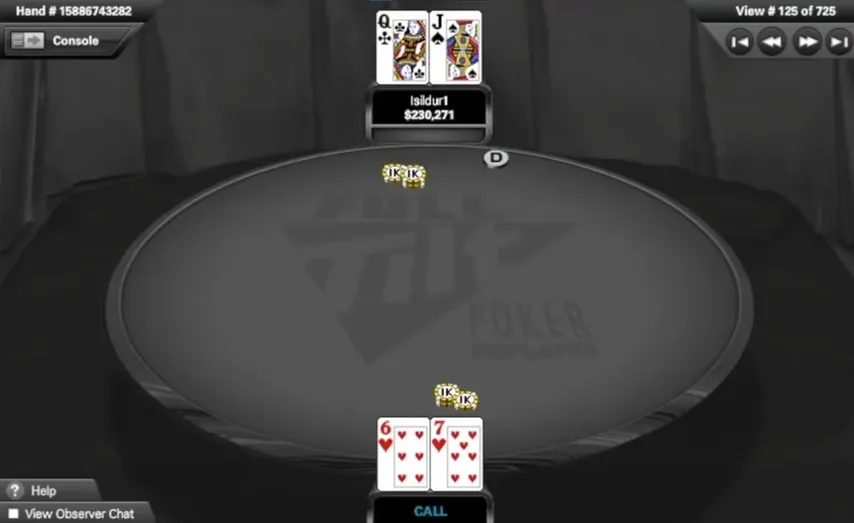
On the flop, Isildur c-bets 5K into 6, which reflects a noticeable difference compared to today's games. As noted, small bet sizes basically didn’t exist back then, especially for continuation bets.
Nowadays, c-betting one-third of the pot is standard; in those days, it was two-thirds or three-quarters.
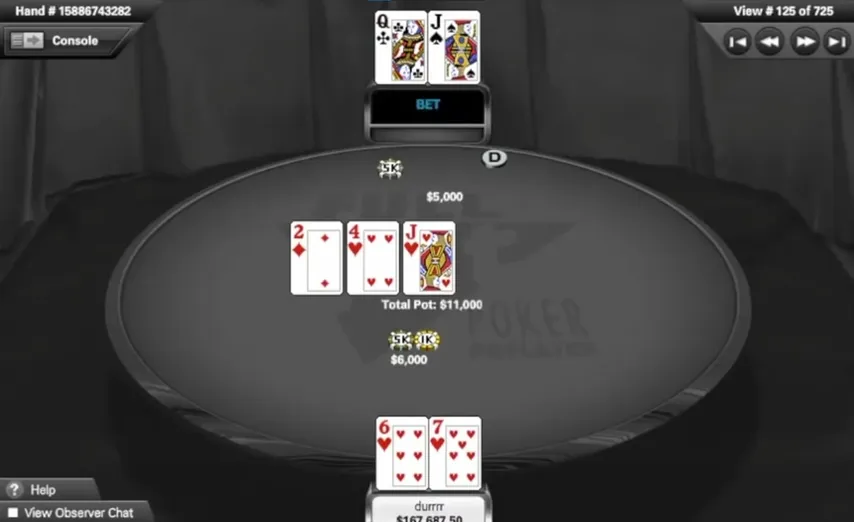
The same holds for pre-flop sizing. Today, we often see opens of 2.5x at maximum—sometimes even 2.2x or 2x—but back then, it was almost always a standard 3x. So even though it’s not a huge mistake to bet big on a , the solver really doesn’t favor it. On other types of flops, such as paired boards, it actually makes a difference.
Let’s adjust the simulation to use this larger sizing on the flop. The overall betting frequency goes down, and Queen-Jack mixes between bets and checks. The third check leads to a flush draw, which is totally acceptable. The turn brings a , and Isildur understandably barrels again, opting for a pot-sized bet, which is the solver's only choice if given a smaller option.
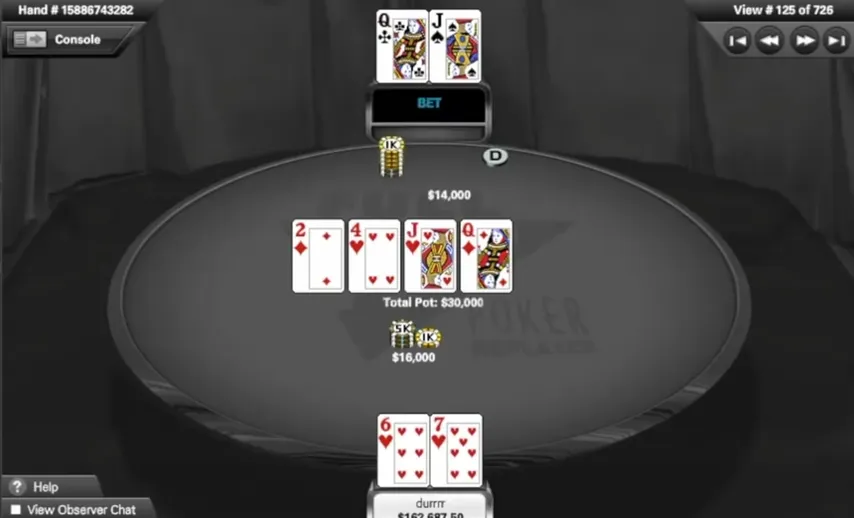
However, in today’s games, we would expect a skilled player to recognize that this is an excellent spot to overbet, which is also the solver’s preferred sizing for this hand.
The board is dynamic, including two flush draws, and the in-position player has a significant advantage. Just as in the previous hand, he wants to leverage this advantage by putting in as much money as possible while the board is still favorable to him. Back then, overbetting wasn’t common practice. In fact, Isildur was the first player to regularly use non-all-in overbets, but he primarily employed them on the river.
Even against the non-overbet, Dwan’s 6-7 of Hearts should just fold. However, the emphasis in this particular battle was that you wouldn’t fold a flush draw.
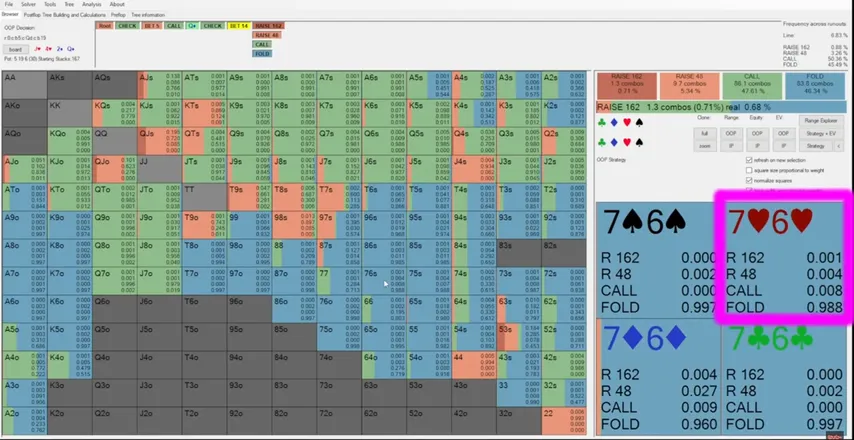
Since you can’t really check-call with a 7-high on the turn, you have to raise instead. This is better than check-calling according to the simulation, but it still results in a loss of one big blind on average against the raise.
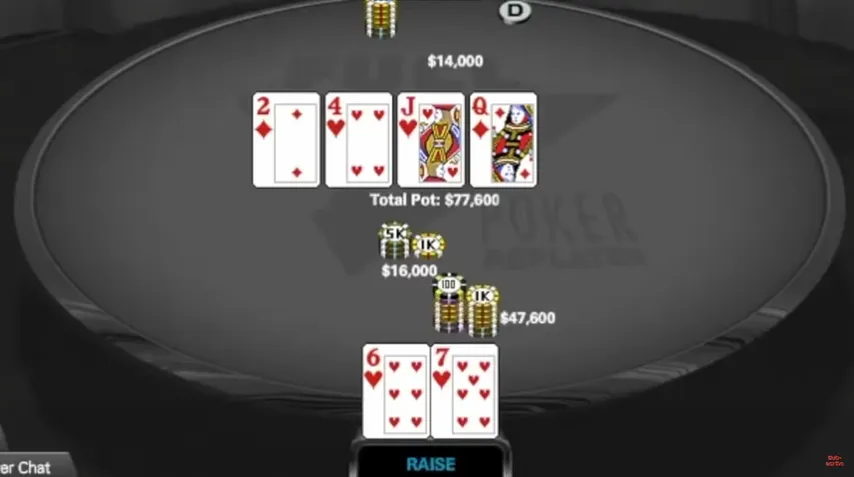
Isildur would typically call most hands in his range, but Queen-Jack is one of the hands that could have benefited from jamming.
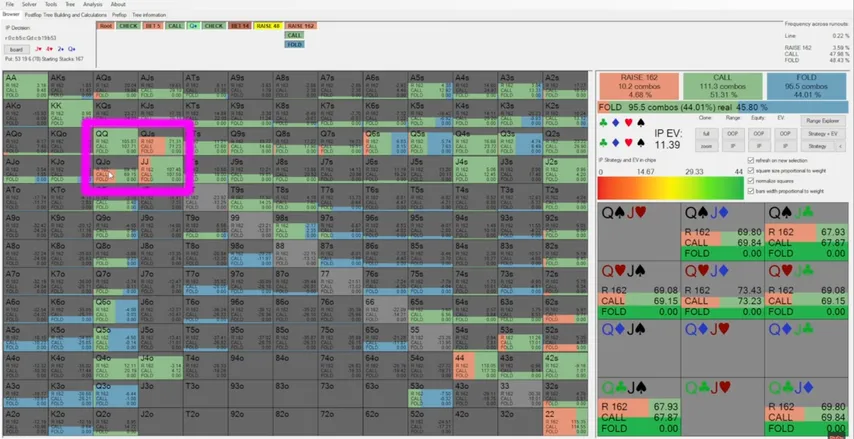
By getting it in against lower two pairs and some pairs plus flush draws, while also protecting equity against pure flush draws, he could gain significant value for his strong hands like top pairs and sets.
He opts to call instead and ends up seeing one of those ugly rivers: the four of hearts. Now, with King-6-7 of Hearts, Dwan is forced to give up. The solver is actually bluffing with no missed flush draws at all, as we block our opponent's flush draws. Thus, it’s better to choose other combinations to put our remaining stack in as bluffs. Hands like 5-3 of spades or clubs, or even some Jack-X combinations mixed in as check-raises on the turn, would make for better bluffs on the river since they unblock villain's folding range and even his calling range.
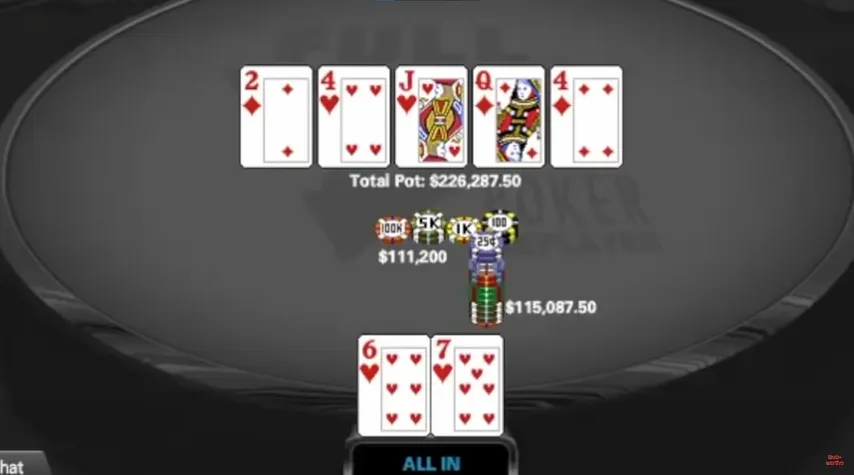
These hands might be challenging to find, which is one of the main benefits that a solver provides.
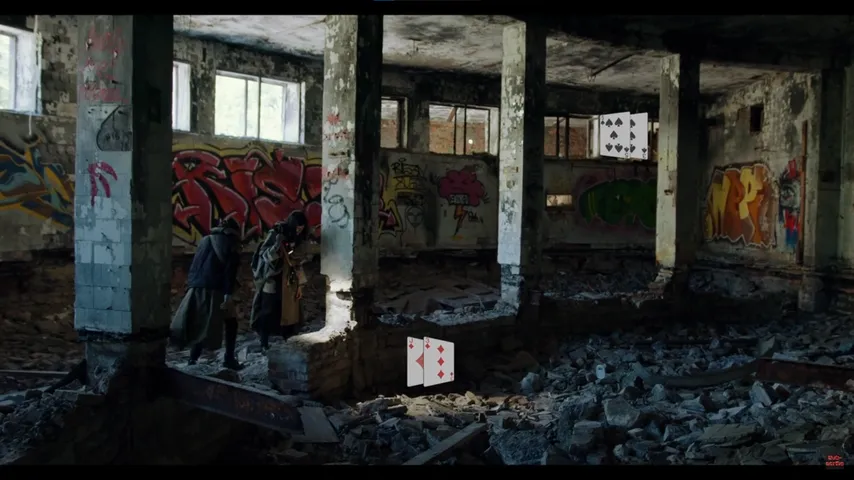
In the prior hand with Isildur, the thought process behind check-raising 6-7 on the turn and bluffing on the river makes a lot of sense. After all, you ensure you have bluffs available when you jam the river, not just your flushes and full houses. With the help of a solver, we can identify strategies that utilize hand combinations improving our overall likelihood of success when bluffing, ultimately increasing our win rate.
Back then, finding these correlations on your own was close to impossible, but one thing these players were always capable of was calling down six-figure bets.
